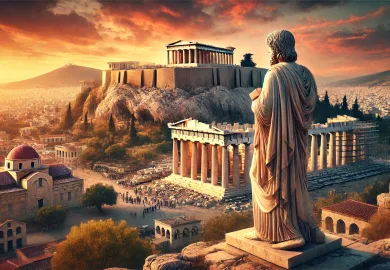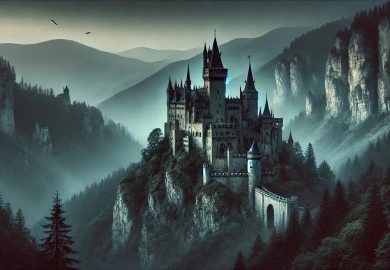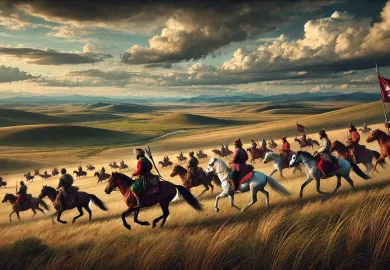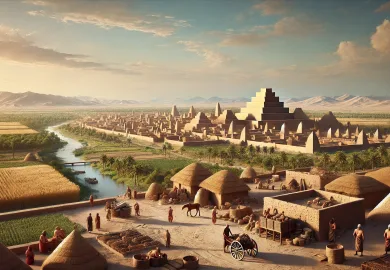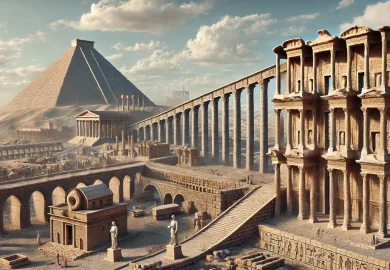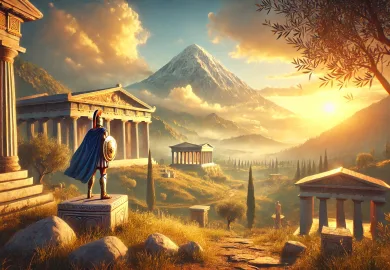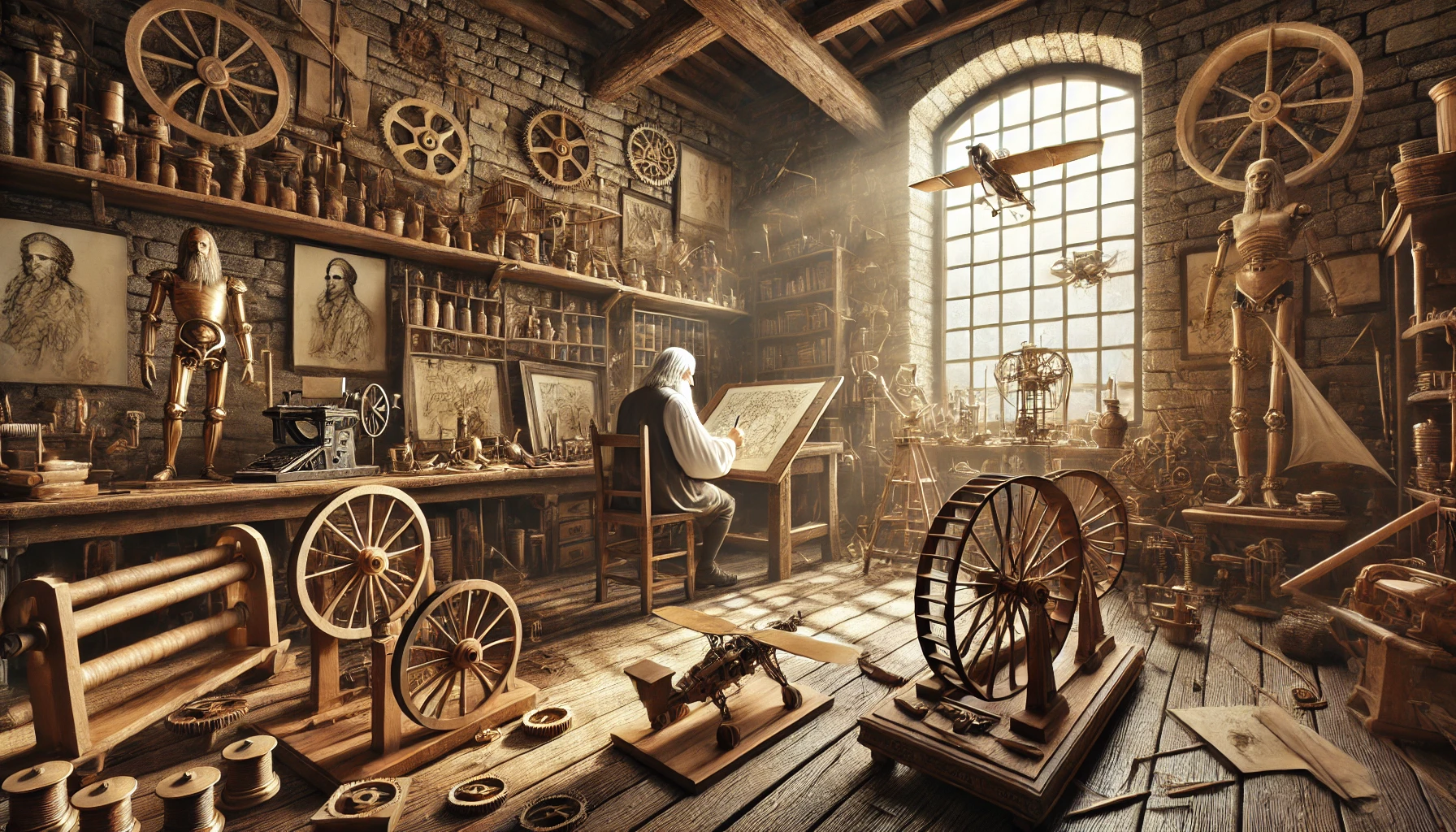
Leonardo da Vinci, one of the most remarkable figures in human history, is known for his revolutionary impact across multiple fields. A master of art, science, and engineering, da Vinci’s inventions were centuries ahead of their time, embodying an extraordinary fusion of imagination and technical skill. While he is widely celebrated for masterpieces like the Mona Lisa and The Last Supper, his legacy as an inventor is equally awe-inspiring. In this article, we will delve into some of da Vinci’s most fascinating inventions, exploring his boundless creativity and visionary ideas that continue to captivate us today.
Early Life and Artistic Beginnings: The Roots of Genius
Leonardo da Vinci was born in 1452 in the small town of Vinci, Italy. His early life provided a foundation for his artistic talents, which blossomed in Florence, a city known for its vibrant Renaissance culture. Raised as the illegitimate son of a notary and a peasant woman, Leonardo did not receive a formal education, which might have limited many. However, he was a self-taught genius who pursued knowledge with fervor, reading and learning about topics ranging from anatomy to geology.

At 14, he began an apprenticeship under Andrea del Verrocchio, a renowned Florentine painter and sculptor. This mentorship introduced him to painting, sculpture, and technical skills that would define much of his later work. In Verrocchio’s workshop, he learned drawing, chemistry, metallurgy, and carpentry, all skills that greatly influenced his engineering and artistic feats. By the time he completed his apprenticeship, Leonardo had already surpassed many of his contemporaries in both artistic skill and intellectual depth.
As Leonardo’s reputation grew, his works began to reflect his intense observational skills and his scientific approach to painting. He understood light, shadow, and human anatomy in ways that had never been seen before. This allowed him to create art that was not only beautiful but also incredibly lifelike, paving the way for his unmatched masterpieces.
The Masterpieces: Mona Lisa and The Last Supper
Two of Leonardo’s most famous works—the Mona Lisa and The Last Supper—are prime examples of his artistic genius and why he became a legend. These paintings not only showcase his painting skills but also reflect his understanding of psychology, composition, and anatomy.
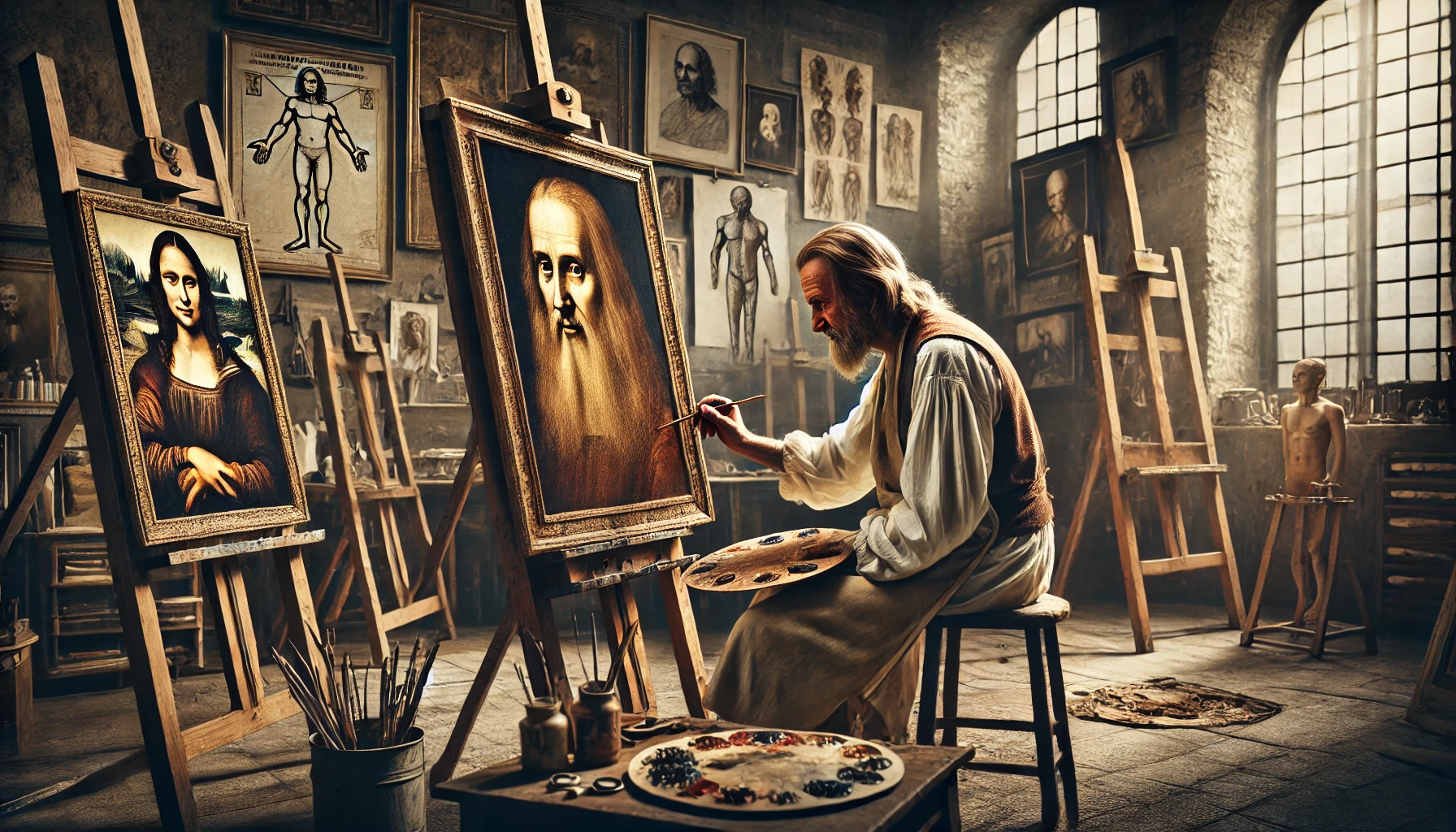
The Mona Lisa, arguably the world’s most famous painting, is a testament to Leonardo’s skills in realism and his understanding of the human psyche. The painting’s subject has an ambiguous expression, a mysterious smile that seems to change depending on the viewer’s perspective. This mastery of subtle emotion has intrigued people for centuries, making the Mona Lisa a symbol of art and mystery around the world.
Similarly, The Last Supper revolutionized religious art by capturing a dramatic moment with stunning realism. Da Vinci used innovative techniques, including perspective and light, to create a scene that feels alive, pulling viewers into the narrative. By placing each apostle with distinct expressions and gestures, Leonardo conveyed a range of emotions that give the painting a timeless appeal. This masterpiece alone exemplified his skill in blending art and storytelling, solidifying his status as a genius of his era.
Da Vinci’s Contributions to Science and Engineering
Leonardo da Vinci’s talents were not confined to art; he was also an accomplished scientist and engineer. His notebooks, filled with intricate sketches and detailed observations, reveal his keen interest in understanding the natural world. These notebooks contain early designs for devices that, though not built in his lifetime, would later become the basis for modern technology.
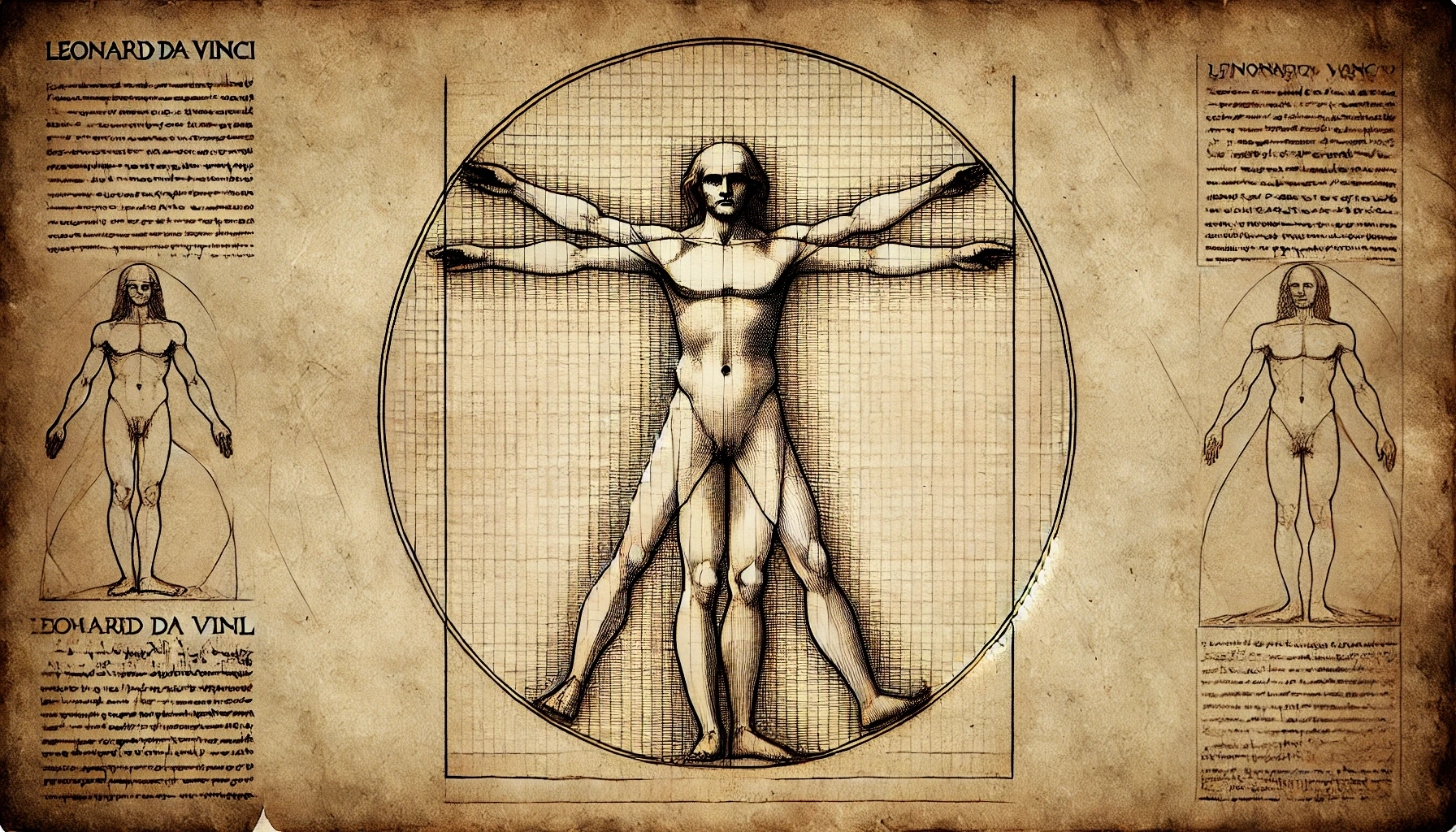
His fascination with anatomy led him to dissect human cadavers, giving him a deep understanding of muscles, bones, and organs. This study was revolutionary at the time, as it not only improved his artistic work by adding anatomical accuracy but also advanced medical knowledge. In his drawings, such as the Vitruvian Man, Leonardo sought to explore the proportions of the human body, reflecting the connection between humanity and nature.
Beyond anatomy, Leonardo’s notebooks are filled with designs for flying machines, armored vehicles, and hydraulic pumps. His sketches of a helicopter-like machine and an early form of a parachute demonstrated his ambition to conquer the skies—a goal humanity would only achieve centuries later. His designs were sometimes far from practical but represented his unparalleled imagination and inventiveness.
The Flying Machine: A Dream of Human Flight
Leonardo da Vinci’s most iconic invention was undoubtedly his flying machine. Inspired by his keen observation of birds and the mechanics of flight, da Vinci envisioned a device that could enable humans to soar through the skies. His famous sketches of the ornithopter, an apparatus designed to mimic the flapping motion of bird wings, laid the groundwork for the modern study of aerodynamics.
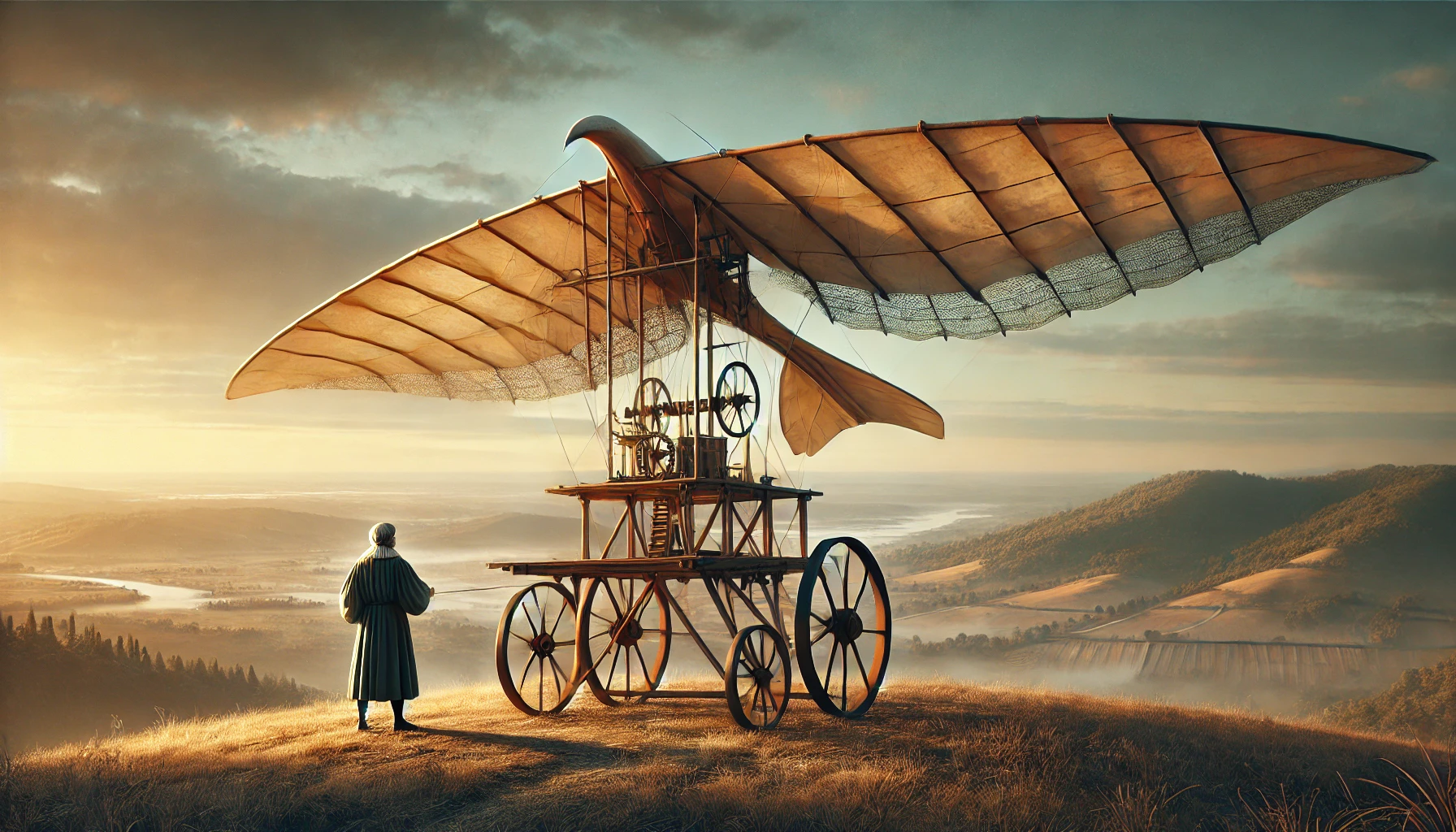
The flying machine was never built during da Vinci’s lifetime, as the technology required to power it simply didn’t exist. However, his detailed designs showed incredible foresight, including the concept of wingspans and body weight ratios that would be used in later aviation breakthroughs. The ornithopter remains one of da Vinci’s most celebrated inventions, highlighting his curiosity about nature and his desire to push the boundaries of human achievement.
Beyond the ornithopter, Leonardo also sketched out ideas for other aviation-related devices, such as a parachute and a primitive helicopter. Though none of these devices were constructed in his time, his work in this field demonstrated a bold leap towards achieving the dream of human flight.
The Armored Tank: Early Vision of Modern Warfare
Long before tanks became a staple of modern military forces, da Vinci had already conceptualized an early version of the armored tank. His design featured a large, conical vehicle reinforced with steel plates, capable of moving in any direction and equipped with multiple cannons. This design was intended to provide troops with a protective, mobile stronghold on the battlefield—a radical idea in an era of hand-to-hand combat and rudimentary firearms.
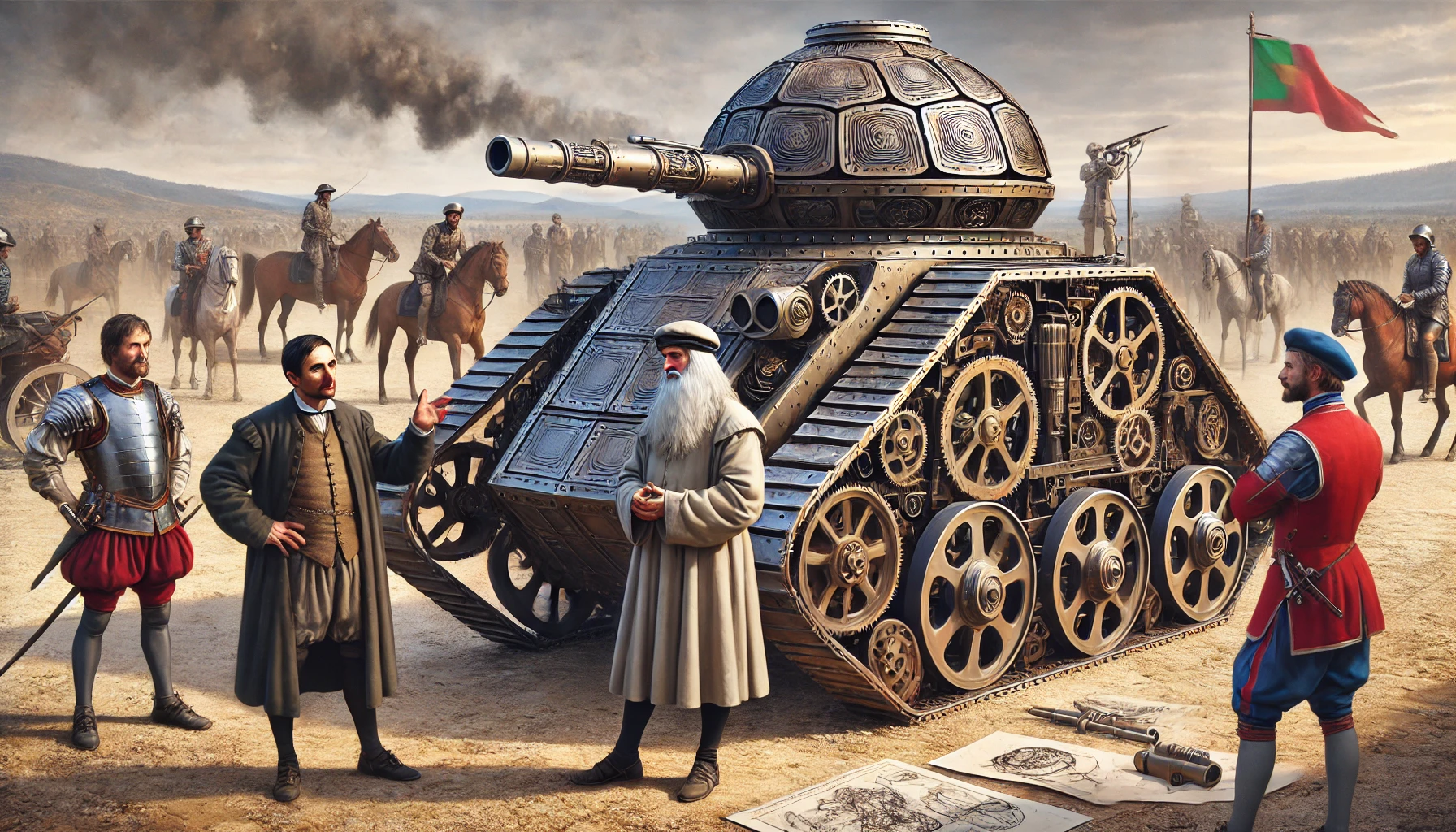
While da Vinci’s tank design was never realized, it showcased his innovative thinking in the realm of military engineering. His sketches incorporated sophisticated mechanical elements, such as gears and cranks, to power the vehicle, suggesting a level of technological understanding that was far ahead of his time.
Leonardo’s tank design also highlights his fascination with the potential of machines in warfare, though he remained conflicted about the destructive applications of his inventions. It is worth noting that da Vinci often left intentional flaws in his military designs, perhaps as a way of ensuring they wouldn’t be misused by those seeking to wage war.
The Mechanical Knight: A Humanoid Robot
Leonardo da Vinci was not only a visionary in the fields of flight and military defense but also a pioneer in robotics. One of his lesser-known yet equally intriguing inventions was the mechanical knight—a humanoid robot capable of limited movement. Built around 1495, this early robot was designed to sit, stand, lift its visor, and even wave its arms. The knight was operated using a system of pulleys, gears, and cables, demonstrating da Vinci’s mastery over mechanical principles.
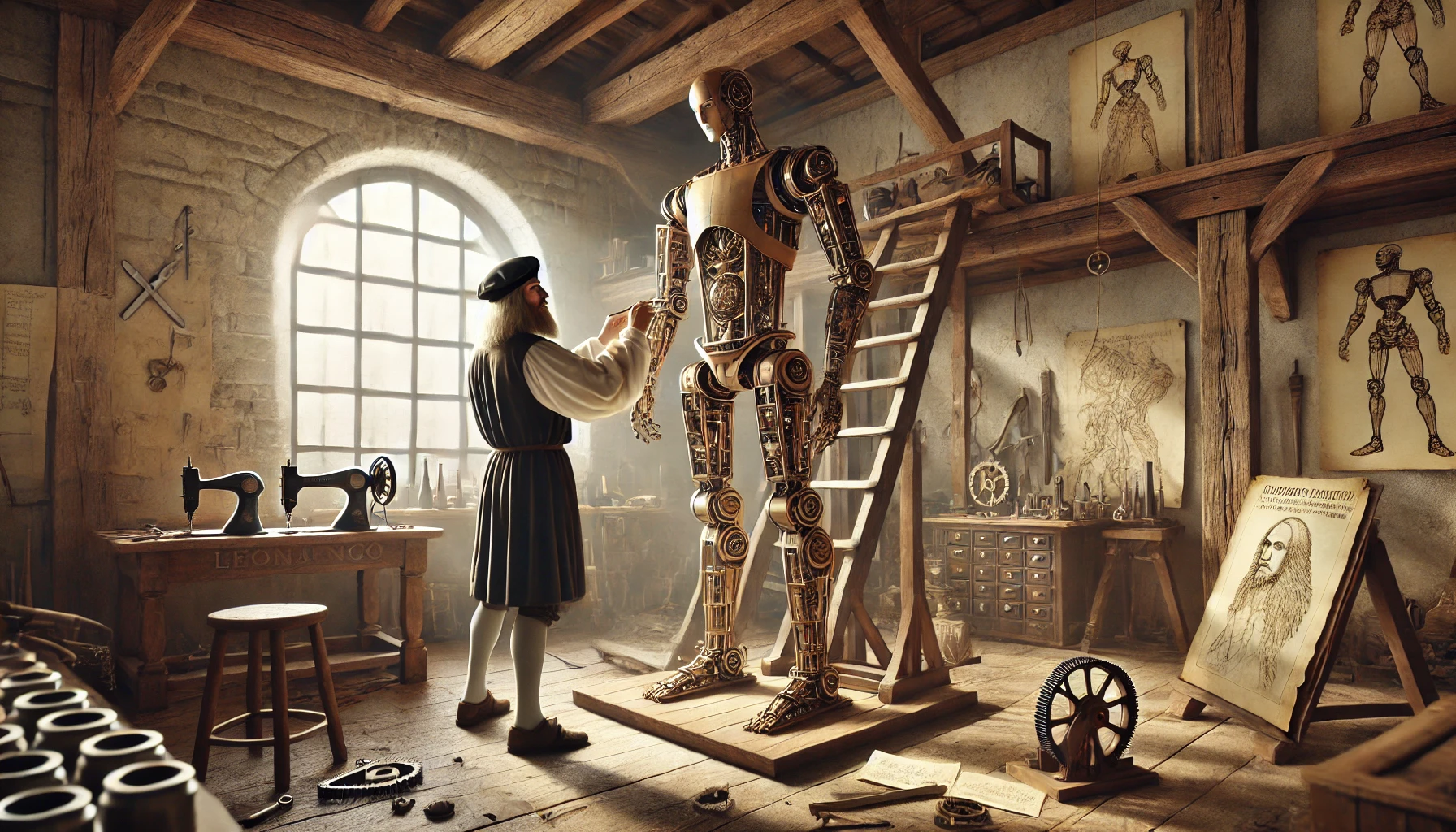
While the mechanical knight was likely constructed for entertainment purposes at royal courts, it underscores da Vinci’s understanding of automation and engineering. His interest in creating life-like machines points to his broader fascination with anatomy and movement, which is also evident in his detailed studies of the human body. In many ways, Leonardo’s mechanical knight can be seen as a precursor to modern robotics, making him a forerunner in a field that wouldn’t fully develop until centuries later.
Leonardo’s mechanical knight remains one of his most captivating inventions, as it speaks to the artist’s ability to blend the mechanical with the aesthetic. It also offers a glimpse into his playful side, as he sought to create machines not just for practical purposes but for the sheer joy of invention.
The Ideal City: An Urban Utopia
Da Vinci’s genius wasn’t confined to individual inventions; he also applied his visionary thinking to large-scale projects, such as his plans for The Ideal City. His sketches depicted a utopian urban environment that incorporated advanced infrastructure and efficient design, reflecting his desire to improve the quality of life through architecture and urban planning. His ideas included elevated walkways, segregated areas for pedestrians and traffic, and efficient sewage systems—features that would not become standard in cities until centuries later.
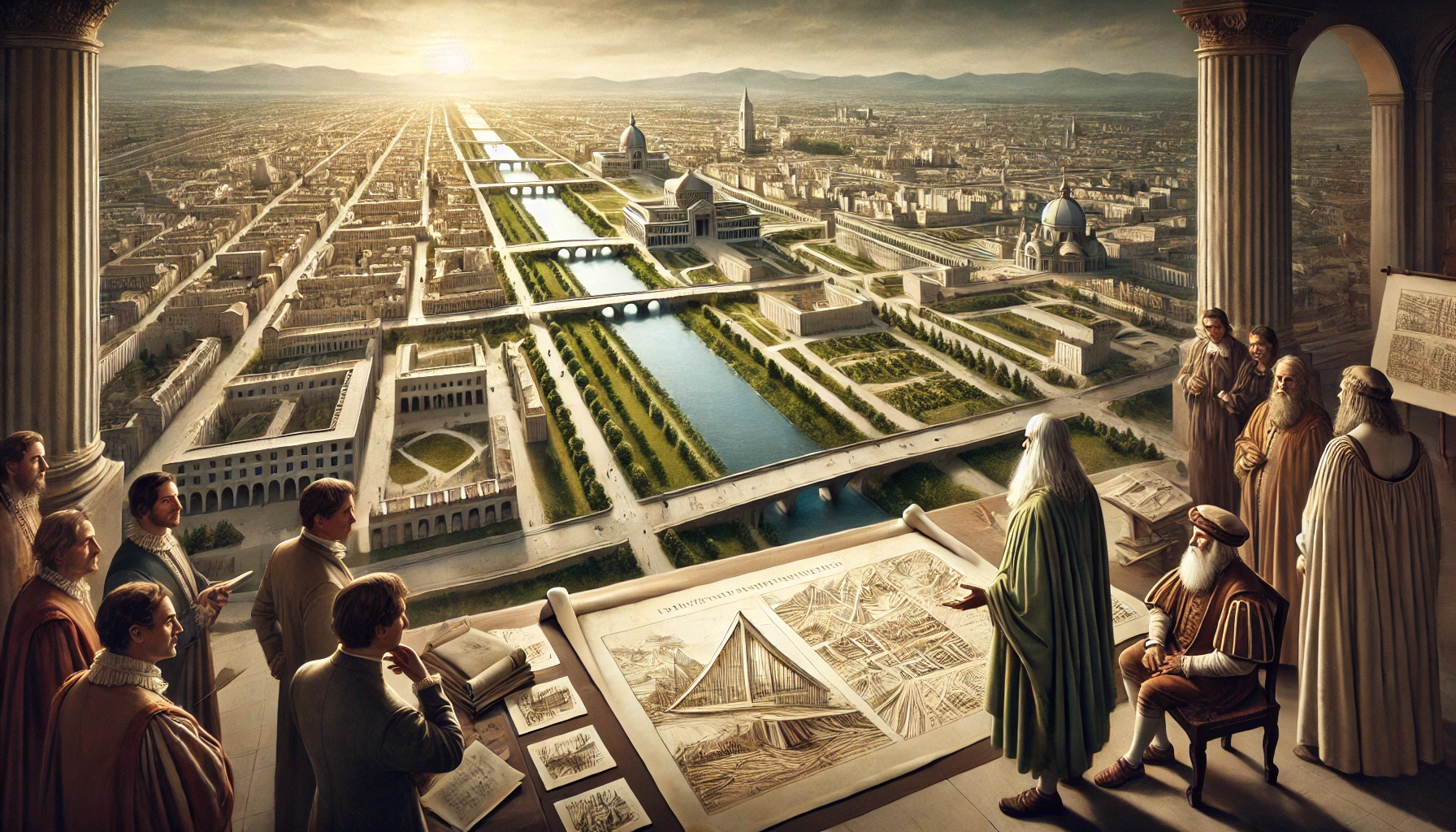
The concept of the Ideal City was born from Leonardo’s experiences in the bustling, often chaotic, cities of the Renaissance. He observed the problems caused by overcrowding, poor sanitation, and inefficient layout, and sought to create a city where human life could thrive in harmony with architecture and nature. His designs also reveal a deep understanding of the importance of public health and the environment.
Although Leonardo’s vision of the Ideal City was never brought to life, many of his ideas have influenced modern urban planning. His forward-thinking approach to infrastructure, water management, and traffic flow laid the groundwork for some of the most essential features of contemporary city design, proving that his insights extended far beyond the immediate concerns of his time.
The Legacy of Leonardo da Vinci: A Genius for All Time
Leonardo’s influence is so profound that it continues to inspire artists, scientists, and engineers today. His lifelong quest for knowledge exemplifies the Renaissance ideal of a “Renaissance Man,” someone who excels in multiple disciplines. His works laid the groundwork for fields like robotics, aeronautics, and even forensics, showing the power of interdisciplinary thinking.

The preservation of his notebooks allows us to see inside the mind of a true genius. They provide invaluable insights into his thought processes and reveal his constant questioning of established norms. In the modern world, Leonardo is celebrated not only for his technical skills and artistry but also for his pioneering spirit.
Leonardo da Vinci’s lasting impact reminds us that true genius lies in curiosity, observation, and the willingness to push the boundaries of what is possible. His contributions transcend time, making him a genius for all ages—a visionary whose work continues to inspire innovation and creative thinking.
Conclusion
Leonardo da Vinci’s inventions were not only a testament to his intellectual prowess but also a symbol of his endless curiosity and desire to explore the unknown. From his dreams of human flight to his revolutionary designs for warfare and urban life, da Vinci’s contributions continue to inspire and captivate audiences today. His work in fields as diverse as aerodynamics, robotics, and architecture speaks to the broad scope of his genius, proving that he was truly ahead of his time.
Though many of his inventions were never built during his lifetime, their legacy lives on in modern technologies. Da Vinci’s unique ability to combine art and science has cemented his place in history not only as one of the greatest artists of all time but also as one of the most innovative inventors the world has ever seen. His ideas remain a source of fascination, a reminder that the boundaries of human potential are limited only by our imagination.

